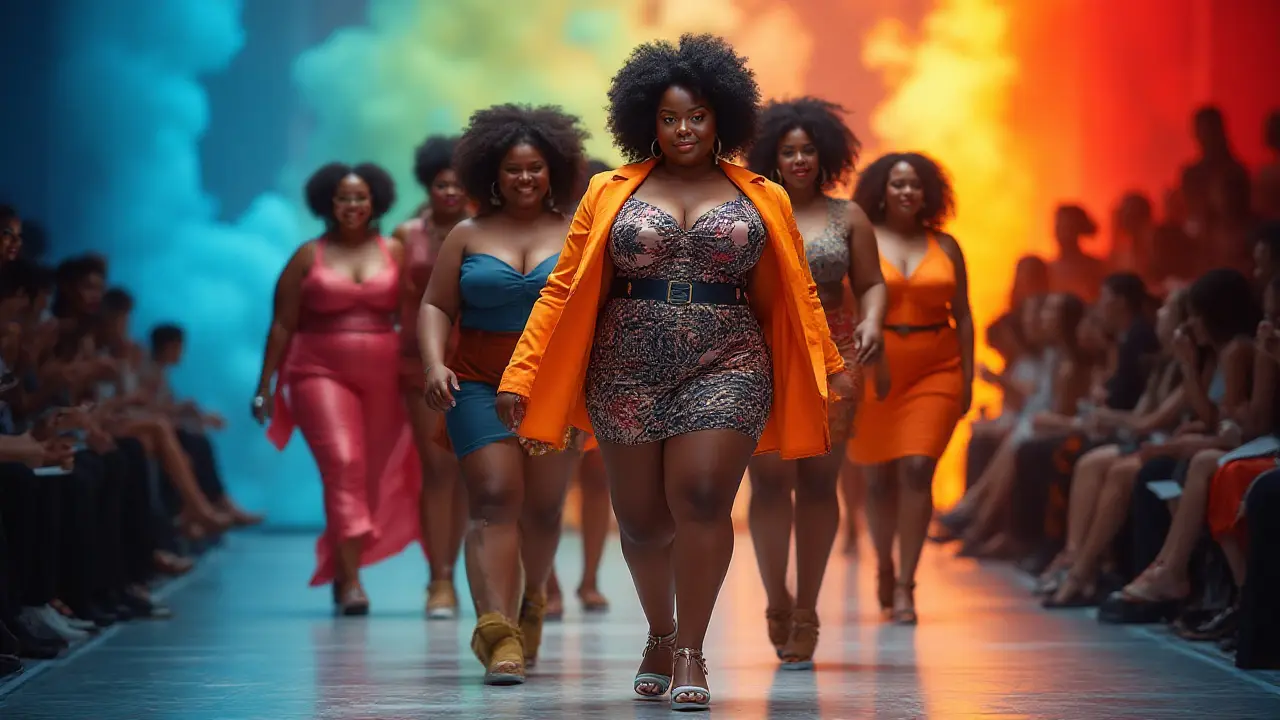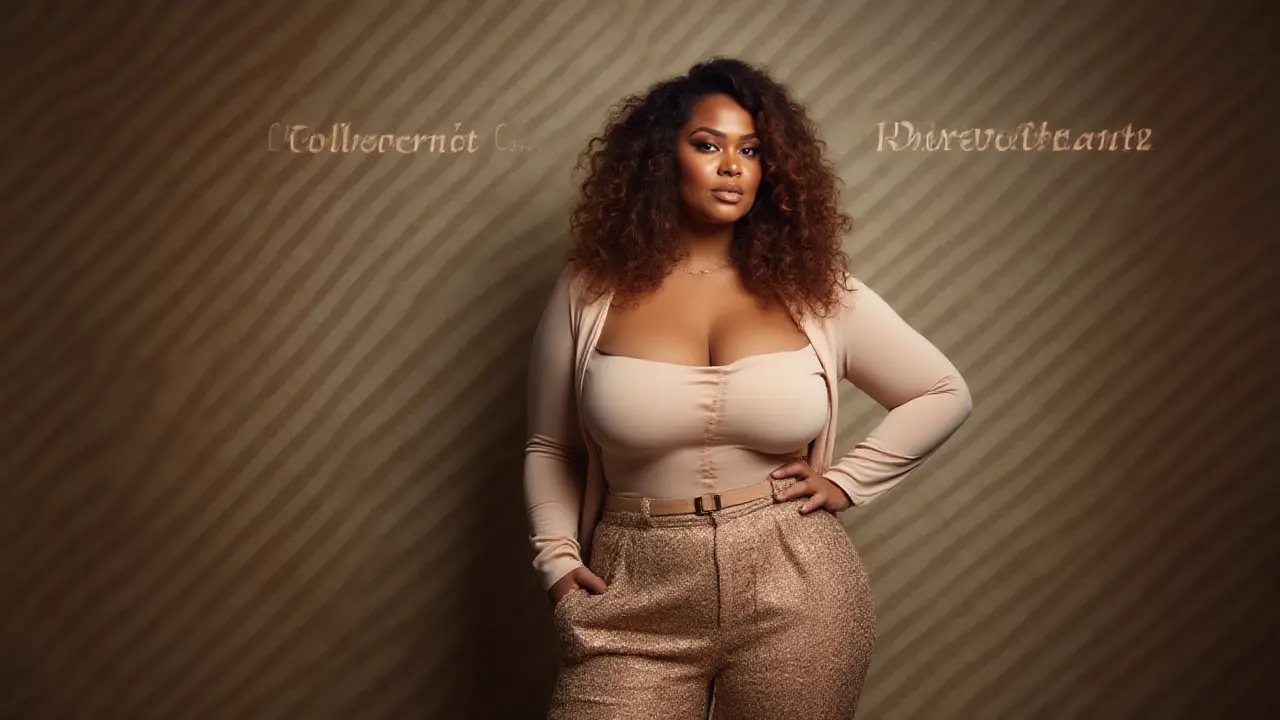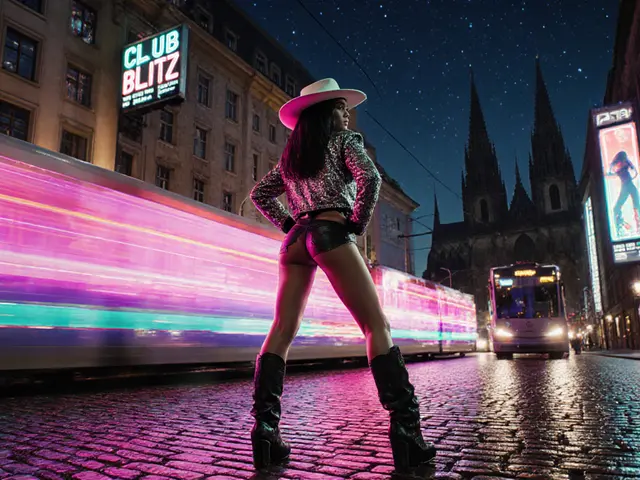
If you peek at any of the big fashion labels these days, you’ll spot something striking. The runways are no longer a sea of just size-zero models. Curvier models—women with soft bellies, wide hips, and real thighs—are everywhere. It’s refreshing, but it wasn’t always this way. Not that long ago, fashion was brutal for anyone above a sample size. Now, the script is flipping. Social media is packed with proud, beautiful women proving every shape deserves the spotlight. And let’s be honest—who hasn’t felt a little more seen when someone like Ashley Graham, Paloma Elsesser, or Tess Holliday graces a magazine cover?
How Curvy Models Changed the Industry
Fashion is stubborn, but the rise of curvy models shook things up hard. Go back about a decade, and you’d be hard pressed to name a single plus-size model on a billboard. The industry was locked in its old ways: clothes made only for slim, tall bodies. But in 2015, Ashley Graham appeared on the cover of Sports Illustrated’s Swimsuit Issue—the first plus-size model ever to do it. Instagram went wild. Retail giants started hiring curvy models for ads. Suddenly, designers faced a new question: why exclude the majority of real women from fashion?
The numbers back this up. In 2023, the global plus-size apparel market was valued at just over $290 billion, according to Statista. That’s a chunk of change the old-school industry couldn’t ignore, and brands like Savage X Fenty, H&M, and even Victoria’s Secret jumped on board. They began hiring models of different shapes and sizes. More brands now shoot full campaigns using curvy models—because photos with more representative bodies flat out sell better. According to a 2022 survey by Glamour UK, 63% of women said seeing curvier models made them more likely to buy from a brand.
But to say this was all social media’s doing misses the point. It’s really the models themselves—people like Graham, Holliday, and Jill Kortleve—who kicked in the door. They used platforms like Instagram to display raw, unfiltered photos, stretch marks and all. These images went viral because they felt honest in a world that usually photoshopped everything. TikTok and Reels make it easy for anyone to share their journey, and hashtags like #bodypositivity and #effyourbeautystandards (started by Tess Holliday) rack up hundreds of millions of views. The message is clear: normal bodies are beautiful.
This movement is still young, and backlash happens. Some say fashion is only “pretending” to be inclusive. It’s true that most high fashion sizes still stop at a US 12 or 14. Yet the direction is right. More agencies now scout for curvy talent. In 2025, IMG Models reports plus-size bookings at an all-time high—nearly 18% of new model contracts. That’s compared to 4% just 10 years ago. Runways at New York and London Fashion Weeks now include at least three plus-size models per major show—tiny numbers, sure, but double what they were in 2020. Progress, slow as it comes, is happening.
| Year | Plus-size Models in NY Fashion Week (%) | Global Plus-size Apparel Market (USD billion) |
|---|---|---|
| 2015 | 1.5 | 186 |
| 2020 | 3.5 | 246 |
| 2023 | 7.1 | 290 |
| 2025 | 10.2 | 315* |

The Real Impact: Confidence, Culture, and Community
Body positivity is more than just magazines and ads. Watching curvy models conquer the public eye changes how people see themselves—and each other. Before, it was common for girls and women to grow up hating their bodies, always wanting to be smaller. Now, you see teens tagging their friends in confident outfit photos, saying things like, “You look amazing!” That stuff matters. In a 2023 Mental Health Foundation survey, 54% of women aged 18-35 said positive representation of curvy bodies in media made them feel better about their own shape.
But the shift isn’t just for women. Men, too, face unrealistic standards. The “dad bod” movement, though less mainstream, echoes the same spirit: fitness and shape are unique to each person. When curvy men like model Zach Miko signed with IMG, the conversation opened up for all genders. Confidence radiates in every direction. You see #curvymodel hashtags on Instagram with over 10 million posts—each a small act of personal rebellion against the old “thin is in” mantra.
Social media, again, drives this community spirit. Thousands of creators give practical tips for loving your body—like how to dress for your proportions (vertical stripes can be magic), the best brands for curvy fits, and simple, no-nonsense guides to styling. People post side-by-sides—one in a “before” pose, hiding their curves, and one after, shoulders back, smile wide—and the likes pile up. It isn’t about vanity. It’s about breaking a cycle of shame.
This new visibility creates real-life changes, as well. Gyms now offer plus-size-friendly classes. Swimwear designers build pieces with actual support for larger busts and hips. Even dating apps like Bumble allow users to pick body-positivity badges. In workplaces, HR teams run diversity-sensitivity workshops including size as a category. These things are the ripple effects started by a model striking a pose in a form-fitting dress and refusing to be hidden away.
Yet, the journey isn’t all smooth. Trolls and critics love to weigh in when they see a curvy body winning attention. The next step for body positivity is not defensive—it's about normalizing confidence so hard that critics get drowned out. To get there, boosting curvy models in campaigns, editorials, and shows isn’t just “nice”—it’s powerful for anyone who’s felt left out by style before.

Tips for Embracing Body Positivity and Supporting Curvy Models
If all you take away from watching curvy models rise is that “confidence is hot,” you’re not wrong. But there are practical moves anyone can try to boost self-acceptance and champion the movement in daily life. First, try curating your social media: mute accounts that promote toxic diet culture, and follow accounts that celebrate different bodies. Research shows that seeing daily images of diverse beauty helps rewire old biases in your brain.
Shopping for clothes can be a battlefield for self-esteem, so stick with brands that celebrate, not shame, your shape. ASOS Curve, Eloquii, Lane Bryant, and Savage X Fenty get rave reviews for inclusive, on-trend fashion. Don’t forget tech: there are apps now, like 3DLOOK, that help you scan your measurements and find flattering outfits for your specific body type. A tip that always lands—invest in a tailor if you can; perfect fit transforms how you feel in any outfit, no matter your body size.
Moving your body should feel good, not punishing. Curvy model Alexa Phelece once shared on her podcast that joyful movement—walking with music, dancing alone in your room, or plus-size yoga classes—will do more for confidence than any “get thin quick” plan. Listen to your body and choose activities you truly love.
To support curvy models, be vocal. Like and comment on their photos, tag brands you wish would feature them, and share their stories. It sounds simple, but public demand is what moved Vogue to start booking more plus-size editorials. If you’re a photographer or creator, showcase diversity everywhere. Even local businesses—like Munich’s own curvy-friendly boutiques—benefit when you highlight inclusive fashion in your reviews. This stuff doesn’t just help models; it tells the world that normal bodies are always in style.
For anyone battling insecurity, remember the real-world impact. A 2024 YouGov Germany poll found that 38% of people who saw regular, unretouched curvy models in advertising felt happier about their appearance. It’s proof that seeing “someone like me” matters, in every city, in every feed. You can be that boost for someone else just by clicking “share.”
Body positivity isn’t perfect, and neither are the people who lead it. But every time a curvy model claims her space in the fashion world, it ripples through culture. So, next time you see a curve in the spotlight, know you’re watching a revolution—one selfie, one runway, one bold step at a time.



